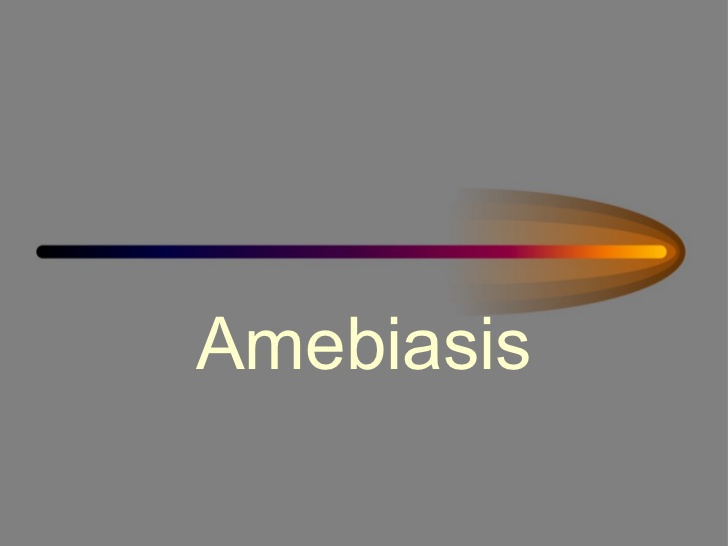
Amebiasis is a parasitic infection of the intestines caused by the protozoan Entamoeba histolytica, or E. histolytica.
Amebiasis
Amebiasis is an infection of the intestines caused by the parasite Entamoeba histolytica.
Causes: Entamoeba histolytica can live in the colon (large intestine) without damaging to the intestine. In some cases, it invades the colon wall, causing colitis, acute dysentery, or long-term (chronic) diarrhea. The infection can also spread through the blood to the liver. In rare cases, it can spread to the lungs, brain or other organs.
Entamoeba histolytica is spread through food or water contaminated with stools. This contamination is common when human waste is used as fertilizer. It can also be spread from person to person, particularly by contact with the mouth or rectal area of an infected person.
Symptoms: Rectal pain while having a bowel movement, abdominal tenderness, abdominal cramps, diarrhea, fatigue, excessive gas, weight loss, fever, vomiting.
Risk factors: Alcoholism, Malnutrition, Pregnancy, Cancer.
Complications:
Diagnosis:
Prevention: Do not eat uncooked vegetables or unpeeled fruit.
Treatment:
Metronidazole: It is an imidazole derivative effective against amoeba, giardia and a variety of anaerobic bacteria. It is effective in both intestinal and extra intestinal amoebiasis.
Adverse effects: Nausea, anorexia
Tinidazole: It is chemically related to metronidazole, effective in amebiasis and giardiasis.
Secnidazole: It is a newer nitroimidazole derivative. It is an effective antiamebic drug.
Emetine: It is effective against the trophozoites E.Histolytica. It acts by producing degeneration of the nucleus and reticulation of the cytoplasm.
Adverse effects: Tachycardia, vomiting, nausea, fatigue and skin rashes
Uses: lung fluke infestation, intestinal and extra intestinal amebiasis.
Dehydroemetine: It has similar action as emetine.
Chloroquine: It is only effective in hepatic amebiasis.
Tetracyclines: They act by altering the intestinal bacterial flora.
Paromomycin: It is poorly absorbed from gut, so it is only effective in intestinal amebiasis.
Fumagillin: It is produced by Aspergillus fungigatus. It is effective only in intestinal amebiasis.
Phanquone: It is effective in both intestinal and extra intestinal amebiasis. It is significantly absorbed from intestine.
Amebiasis, intestinal, extra intestinal, e.histolytica